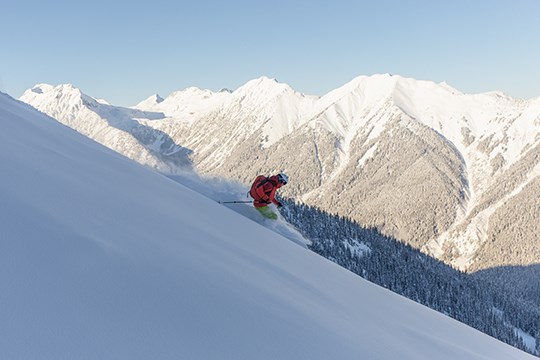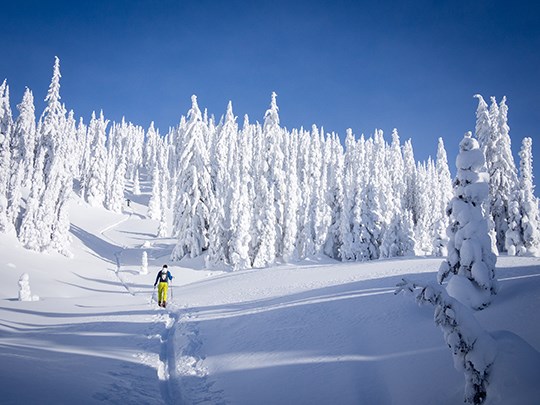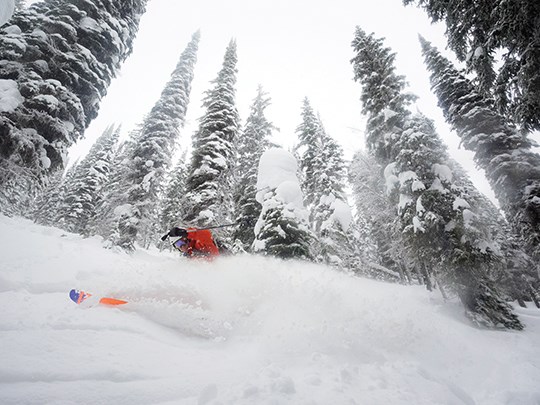With the mountains around ôÕÑ¿èÓ¿ºýºwearing their winter coats now for the foreseeable future, thoughts about exploring those wild and gleaming places begin to percolate to the surface; environments where you can find solitude, wonder and the occasional perfect slope of bottomless powdery snow to ski or ride through.
The simple beauty of winter, when the jagged edges of rocks and roots are smoothed over by metres of snow, belies the increased danger that this time of year brings. But with education, awareness, preparedness and experience you can continue to enjoy the wild places around ôÕÑ¿èÓ¿ºýºat any time of year.
The hardest step in learning to be avalanche aware is the first ã acknowledging what knowledge you donãt know. The first mistake many make, including myself, in the beginning, is assuming: ãI know about avalanches, but they donãt apply to me, I donãt go where avalanches happen in the winterã.ä»
If you go into the backcountry during the winter months you could be at risk of getting caught in an avalanche or buried in snow.ä»
I grew up in a country that seldom gets snow. When I moved to Canada I knew of avalanches but thought of them as a problem for skiers or snowboarders, not for me. I started out snowshoeing so made the assumption that I didnãt need avalanche training. The individuals I snowshoed with also shared this belief.
We stuck to slopes that werenãt steep and stayed in the forest and valleys. I imagined, from what little I knew, that I was being safe. It was only after I began to learn to ski and took my first avalanche safety course that I realized just how many times Iãd put myself at risk in avalanche terrain while snowshoeing. I began to grasp the scope of the information and the understanding that I lacked.
Even though Iãd stayed off of slopes that I thought could be vulnerable to avalanches, Iãd travelled below them many times. Iãd also travelled over and through features that could trigger avalanches. My lack of awareness also stopped me from even checking avalanche forecasts so Iãd gone out into the mountains when the avalanche risk was high and even extreme. It is humbling to learn just how complex the mountains can become in winter.
ä»

ä»
Observations:
It is important to pay continual attention to avalanche forecasts and online discussion groups that note conditions in the field (check avalanche.ca for current forecasts).
This way, as a winter season progresses, you can get a sense of the history of the snowpack beneath your feet and how it has formed and what to be aware of before you even head out there.ä»
If you feel confident to head out into the mountains, then the observation should continue. With training, you will pay close attention to the weather and how it is changing the snow around you. For example, is wind transporting it, is cold causing hoar frost to form?
You will also want to visually look for evidence of past avalanches and understand what caused them.
Digging snow pits and examining a cross-section of the snowpack should help reveal problems that might be encountered on the slopes you wish to travel on.
ä»
Trip Planning and Preparation:
Decisions that are made days before an adventure into the mountains can dictate how successful or dangerous it turns out to be. Your observations about what is happening with the snowpack in the mountains should inform your decisions about the locations you wish to visit and how ambitious the objective should be.ä»
Consider what your route options are, how to avoid avalanche terrain, how much daylight you have ahead and when and where you expect to be at different times in the day. Think about what emergency equipment are you bringing (i.e. beacon, shovel, probe, etcetera.) and how you could rescue someone caught in an avalanche in the terrain you will be visiting.
ä»

ä»
Human Factors:
A big one to consider and something that education canãt fully account for is the individuals in the group that you choose to explore the mountains with.ä»
You should honestly evaluate each personãs experience level. Ask questions such as: Do they have the skills to ski the terrain? Do they have the fitness level to keep up? Who will lead the group?
It is common for humans to fall into traps such as overconfidence when they are familiar with the terrain. An example might be if youãve skied a slope several times before and never experienced any avalanche activity. It becomes easy to let your guard down and not pay as close attention to the risks as you would if you were visiting a new area.ä»
You might also drop your guard if you go skiing with individuals of much greater experience than you and thus ignore signs of danger that you wouldnãt ignore if you were leading a group by yourself.
Communication is paramount when visiting avalanche terrain. Discuss the terrain, the routes and objectives, the weather and each individualãs concerns. The results of these discussions will play a strong role in the selection of terrain and what techniques will be used to travel through them.
Lastly, if you take one thing away from this article, it is that you always need avalanche awareness education to travel in the mountains in winter.ä»
While there are multitudes of resources online and in print to inform you about making decisions in avalanche terrain, nothing can replace being in the snow with an educator and learning firsthand.
Thankfully, a free opportunity to do just that will take place near ôÕÑ¿èÓ¿ºýºin January. On Jan. 20th and 21st visit the Red Heather Shelter in Garibaldi Park to learn more about avalanche awareness firsthand. This free event runs from 11 a.m. to 2 p.m. both days.ä»
I have personally attended this course previously and I highly recommend it. Let this be your first step toward safer travels in our wintery ôÕÑ¿èÓ¿ºýºmountains.
Information on how to get to the trailhead can be found on the Garibaldi Web Pag Chains are mandatory for the upper section of road, although some people park at the ãchain-up areaã and hike to the trailhead.




